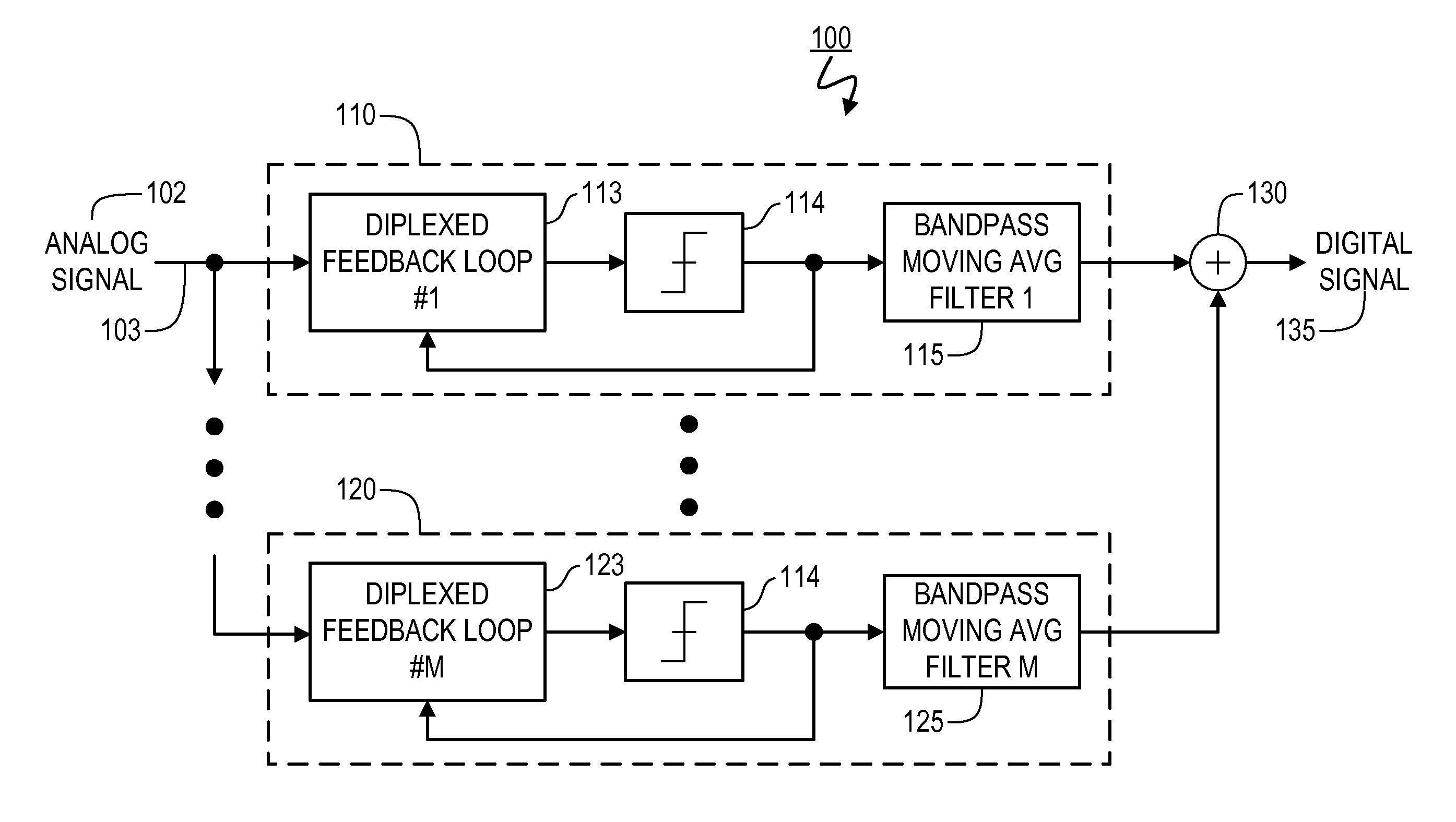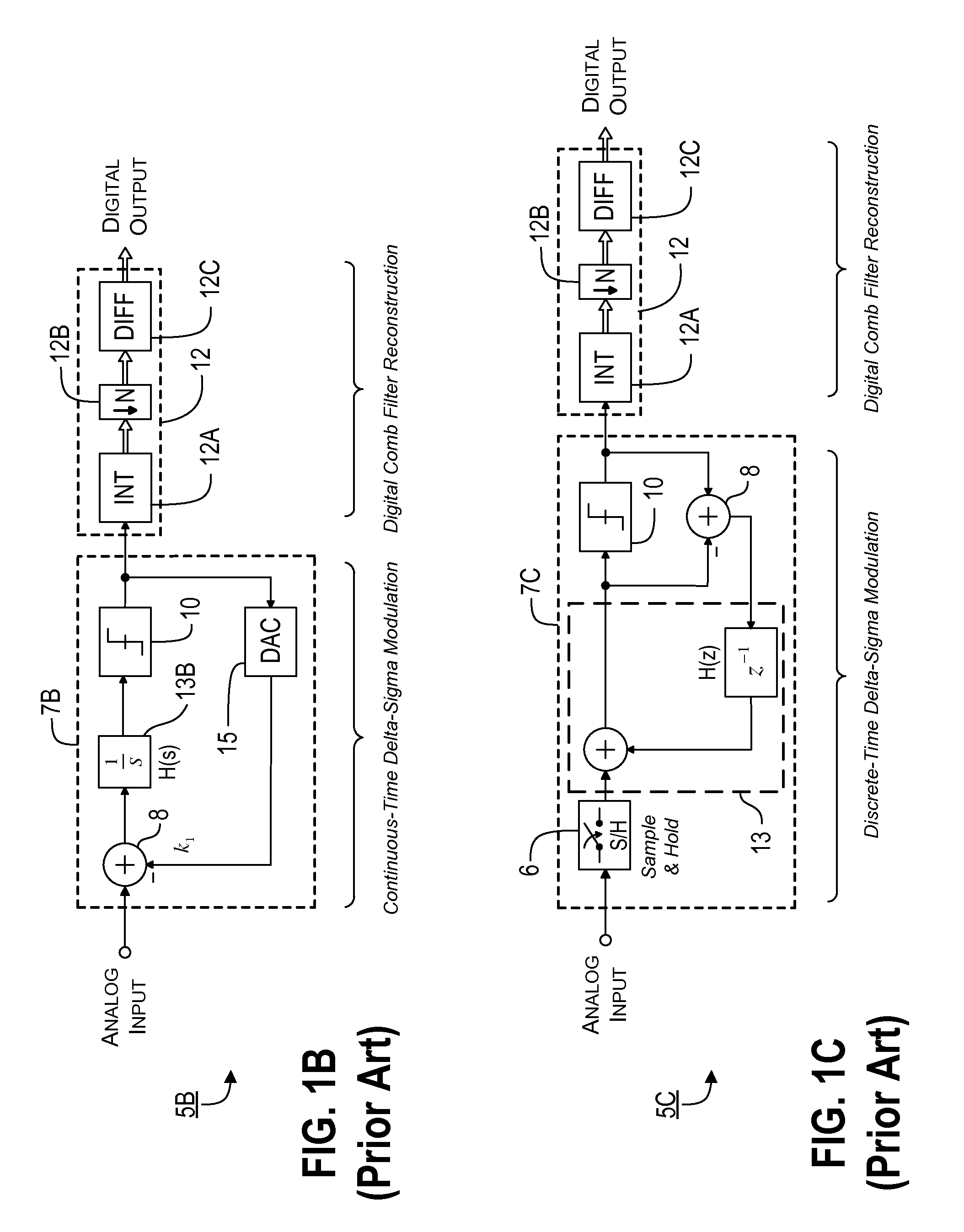Sampling/Quantization Converters
- Summary
- Abstract
- Description
- Claims
- Application Information
AI Technical Summary
Benefits of technology
Problems solved by technology
Method used
Image
Examples
Embodiment Construction
)
[0043]A preferred converter according to the present invention uses a technique that sometimes is referred to herein as Multi-Channel Bandpass Oversampling (MBO). Such a technique shares some structural similarities with conventional parallel delta-sigma (ΠΔΣ) and multi-band delta-sigma (MBA) analog-to-digital converters, in that the MBO converter also consists of multiple, parallel, oversampling converters. However, an MBO converter according to the preferred embodiments of the present invention incorporates one or more of the following technological innovations to improve instantaneous bandwidth and resolution: (1) continuous-time, Diplexed Feedback Loops (DFLs) are used in place of delta-sigma modulators, e.g., to improve quantization noise shaping at very high converter sample rates; (2) bandpass (preferably second-order or higher) oversampling eliminates the need for analog downconversion using sinusoidal waveforms or Hadamard sequences (e.g., as in ΠΔΣ converters); (3) Moving...
PUM
 Login to View More
Login to View More Abstract
Description
Claims
Application Information
 Login to View More
Login to View More - R&D
- Intellectual Property
- Life Sciences
- Materials
- Tech Scout
- Unparalleled Data Quality
- Higher Quality Content
- 60% Fewer Hallucinations
Browse by: Latest US Patents, China's latest patents, Technical Efficacy Thesaurus, Application Domain, Technology Topic, Popular Technical Reports.
© 2025 PatSnap. All rights reserved.Legal|Privacy policy|Modern Slavery Act Transparency Statement|Sitemap|About US| Contact US: help@patsnap.com



